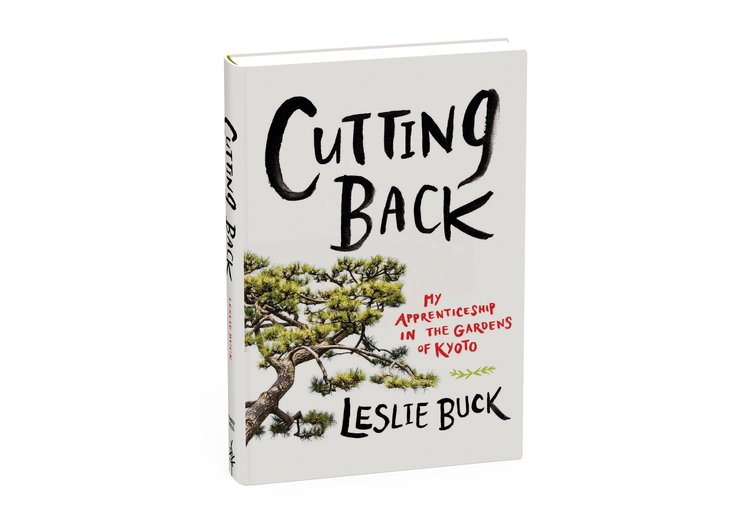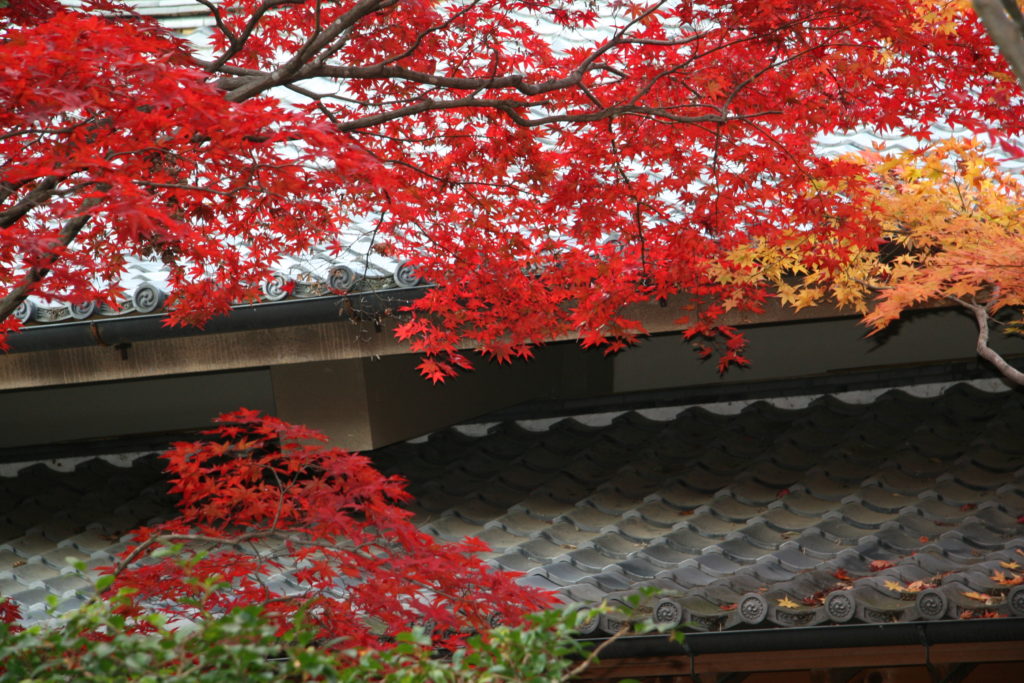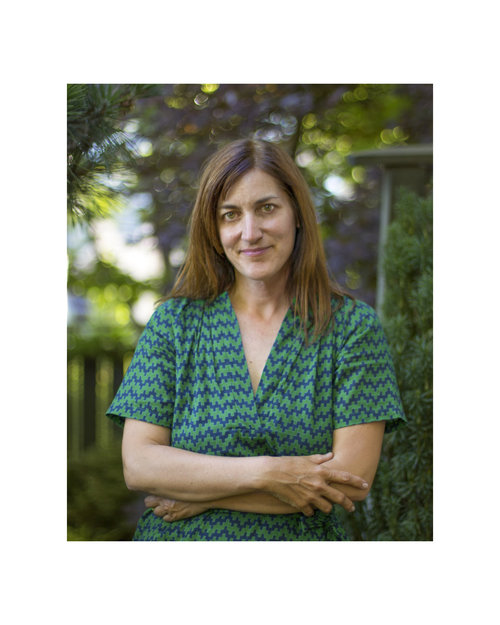This blog post is a special treat for the readers of my blog; and for all green professionals, gardeners and people who appreciate Japanese gardens. I sent Leslie Buck five questions to answer exclusively for this blog and she generously answered them. I wanted to know what she was doing after her book publishing adventure and I think her answers below paint a good picture.
Originally, the idea was to publish this before the summer meeting in Oregon of the North American Japanese Garden Association. Sadly, I didn’t get to it, nor did I find time to drive down to Oregon. I’m a busy soccer Dad.
The set-up
Leslie’s Cutting Back: my apprenticeship in the gardens of Kyoto memoir details her work in Kyoto, Japan, where she spent months working for one of the top garden companies. I reviewed the book in a previous blog so I don’t wish to say any more about it. I bought the audio version and listened to it while I worked in the landscape. If you like Japan, its gardens, plants and pruning, this book is a great fit.

Why I love Leslie’s spirit
Imagine flying from California to ancient Kyoto in Japan and getting a job on a pruning crew at a top gardening company. It doesn’t sound radical but when I considered working in Japan people encouraged me to start elsewhere; not in ancient Kyoto where master gardeners are all-stars.
Leslie’s goal was to learn pruning techniques, not get stuck on a weeding crew somewhere. I love the ambition and drive. And don’t forget that in Japan many jobs are still divided by sex. I’ve seen all-female municipal weeding crews in action; and only the men nearby were using small engine machines.
Leslie writes that she had a few female gardening co-workers in what is a physically demanding job.
Ancient Kyoto is also super beautiful. I’ve been there several times and it never gets old. It should be on a everyone’s live-it list, especially in the fall. I would almost take any gardening job if it was in Kyoto, Japan.

Interview
I sent Leslie five questions and I did very little editing on her answers. I hope you get to know her better; and if you can, buy her book. (Disclaimer: I am purely a fan, there are no affiliate links here, and I won’t profit from any future book sales. )
VS 1. How has your life changed after the publication of your book?
LB: Thankfully, my family still treats me like, “the little sister,” but many wonderful things have changed after getting my book published by Timber Press! I had a hard time writing essays in college, so I was quite surprised with how my writing improved later in life. I wrote “Cutting Back,” over a fifteen year period, off and on, mostly with a half-a-day writing practice a week. Writing practice, like pruning practice, helped me develop what many have described as a “beautiful writing style” with “a unique, personal voice.”
Getting a New York Times book review, featured on my favorite nature podcast, “Cultivating Place,” and having my book become #3 non-fiction best seller for a month was quite a shock! Occasionally, I felt like I was in a dream. Link to my podcast-interview here!
One librarian approached me after a talk to tell me she’d read quite a few books in the past, but that my writing voice was one of the more exceptionally beautiful ones she’d ever read. That sunk in. Many people like old bonsai guys who studied with strict masters like my Kyoto boss, American expats living in Japan, or one of my favorite writers, Molly Peacock of “The Paper Garden,” have given me lovely, appreciative feedback through my website or Instagram, and I respond to every one fondly.
A former University Japanese culture student wrote the other day saying of all their studies, my book gave them one of the more sincere glimpses into Japanese culture. Japanese believe that one craft can feed another, so I’ve begun to wonder if my aesthetic pruning work, and my dabbling into poetry (inspired by Gary Snyder and Emily Dickinson) may have fed my writing skills. I have definitely learned that no matter much talent you think a person has, that appreciating them can have an impact.
I’ve been surprised how native plant organizations in the United States have embraced the book. I’ve done many presentations on the relationship between native garden design and Japanese gardens. Often people read “Cutting Back” before traveling to Japan and tell me how the memoir helped them understand the gardens in a deep way. With all this great feedback, I’ve felt a deep satisfaction this year, that a large audience has been tricked (ha-ha!) into learning about natural gardens and pruning through a fun story. Being a dramatic memoir that reads like fiction, “Cutting Back” was different than any previous Japanese garden book, and I’m thrilled it has been embraced by gardeners and non-gardeners alike.
(The book has now been published in Chinese.-VS)
VS: 2. How did your clients survive while you were away apprenticing in Japan?
LB: Clients? What about the gardens?! My clients waited patiently, but my plants rebelled! I missed visiting many gardens last year with over 23 speaking events! When I’ve returned this spring, the plants had exploded! Perhaps heavy winter rain encouraged this, and not that the trees felt jealous that I’d given so much attention to a book instead of them! But who knows. My clients call and ask, “are you still gardening?” and I respond, “Of course! I have to support the book!” I am very fortunate to have wonderful clients who appreciate natural pruning and are willing to wait for me to return.
After reading “Cutting Back” my clients are more educated, and they sometimes slyly slip me lines from my own book, concepts I’ve been trying to explain to them for years. The year before I approached publishers, I upped my writing to three,full days a week for a year-eating a bit too many cafe cakes in the process. So its great to get back in the garden, back into shape (gardening is a paid workout for the body and creativity!), to the place that feeds my thoughts for future writings!
VS: 3. What projects are you working on right now?
LB: I am doing more garden design consultations where I help clients figure out how to fine-tune the atmosphere in their gardens over time using expert craftspeople. I have done a few designs like a courtyard renovation in Berkeley’s City Club, a Julia Morgan building. I am best at renovating and improving existing landscapes.
And I continue speaking at various garden clubs and will be in LA in February at the lovely Shoseian Tea House. Overseeing landscapes is like painting, but the creation is on a live landscape!
Pruning gardens and teaching introductory pruning are two things I can do almost blindfolded, so I’m very satisfied to continue doing this work. The gardens are where I get my ideas, inspiration and time to think what new stories are on the horizon. I’d like to get back to writing on the side, soon. So thank you Vas for encouraging me to say this out loud! (You’re welcome.-VS)
I have several ideas in mind, but I believe in “doing” to discover what’s next, rather than figuring it out in my head. I always say, “dip your toes in the water to see if you want to jump in!” I’ll always feel insecure as a writer, but once I get started, thoughts slip out of me onto the paper! Ruminating about things is a lost art that is so enjoyable! Just for pure pleasure, I highly recommend writing about our travels!
I’m on the look-out for a city or town home with beautiful garden in Scotland or Ireland where I can act as caretaker for a few weeks. I’m on “Home exchange.” Working in gardens helps ground me, but relaxing in a garden with a cup of tea, writing new stories is one of my greatest joys.
VS: 4. What advice would you give to someone who has read your book and, inspired, also wants to do a gardening apprenticeship in Japan?
LB: I’d suggest they go out and get some gardening jobs to see if they can handle the physical aspect of gardening and pruning. Start studying Japanese. Find out if there are classes, training or jobs available in local Japanese gardens. We teach incredible natural pruning classes in Oakland, California at Merritt Horticultural School.
Portland Japanese Gardens has a new education center geared for multi-week training intensives, similar to what one would learn in Japan. Attend the North American Japanese Garden conferences and meet potential connections.
Don’t force yourself into any dream. Just pursue the dream, and keep your eyes open to what happens. Are you moving along towards your goal, or is there a new idea that is trying to get your attention? Training in Japan can feel harsh to someone from the USA and is not for everyone. There are many options. Study with local bonsai clubs to learn basics of natural pruning you can loosen and adapt to garden pruning. Go hiking in nature and sketch or take notes! Perhaps learn about native landscaping here in America, rather than the native landscaping of Japan. There are some native landscapers building beautiful, natural landscapes in America. Are they in your area? Dip your toe in the water and travel to Japan for a brief trip. I’ve heard of some doing brief gardening stints in Japan through “WWOOF” sites.
Finally, remember that, in Japan, trying to do your best to pursue a goal, in other words your effort, is more important than your success. As I have shown in “Cutting Back,” if you focus on your effort and not your success, you will always feel a sense of pride at the end of the day.
VS: 5. You’re moving to a green, isolated island. What three things do you bring?
LB: My writing desk (with sketch pad/pencils/writing paper in drawer and tea/cake on top), my cat and a loved-one with a sense of humor!



